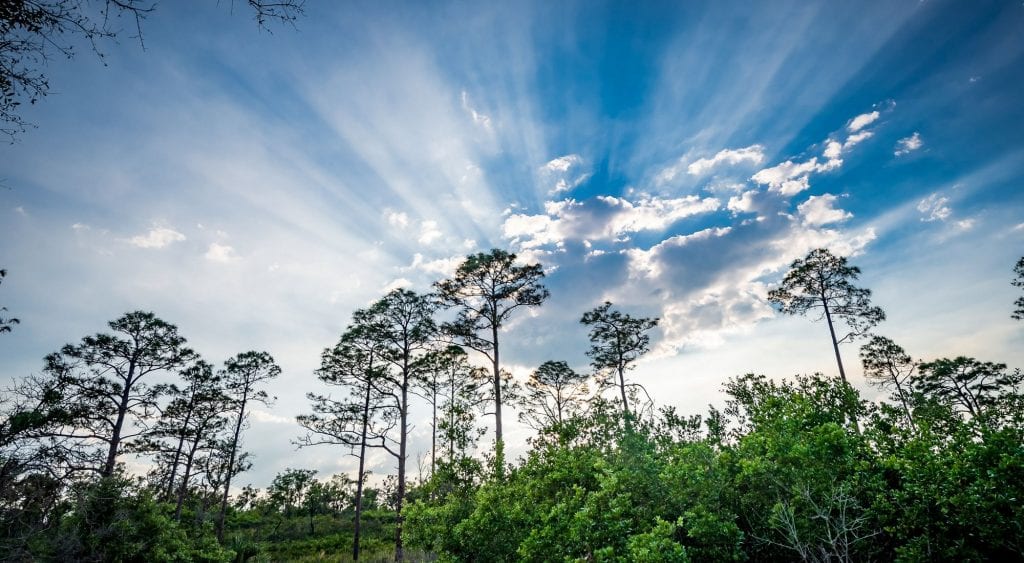The Nature Conservancy, UCF Coastal Join Forces To Study Protected Lands

The longleaf pine ecosystem thrives at Tiger Creek Preserve in Florida (Courtesy: The Nature Conservancy and Roberto Gonzalez)
Tens of thousands of acres of protected Florida habitats will receive deeper scientific scrutiny thanks to a new agreement between The Nature Conservancy (TNC) and UCF Coastal.
TNC has been on a mission since 1961 to guard prime Florida landscapes from development and conduct scientific research through a team that includes 50 scientists and land stewards. Now, UCF students and faculty have the opportunity to tap into these diverse ecosystems and expand on the work TNC has been championing for close to 60 years.
“We value our long-term relationship with UCF, and this expansion of our partnership will inevitably produce some very interesting and valuable results,” said Steve Coates, director of Stewardship and Field Programs for TNC in Florida.
Pegasus Professor Graham Worthy, Ph.D., director of UCF Coastal, notes multiple advantages this new agreement represents. Grant proposals become much more attractive when you can guarantee a location for the research. Also, protected lands are typically undisturbed and offer a wealth of historical data researchers can draw on to draft a long-term picture of Florida’s ecology.
That’s particularly vital for forecasting potential impacts of climate change, Worthy said.
“Things are rapidly changing in Florida,” said Worthy. “Looking across historical data gives us a much better idea of what’s to come.”
The Nature Conservancy will also reap the benefits of the additional research opportunities presented by collaborating with UCF Coastal’s trained scientists and students. Coates said UCF students will discover TNC’s preserves offer a depth and breadth of experience they are unlikely to find elsewhere. Some examples include extremely rare steephead ravines and streams along the Apalachicola Bluffs and Ravines Preserve; the wetlands and longleaf pine forests of the Disney Wilderness Preserve; the sandy beaches and unique Anastasia limestone outcrops at Blowing Rocks Preserve; and Tiger Creek Preserve, which contains one of the highest concentrations of threatened and endangered plants and animals in the country.
According to Coates, collaboration is at the center of TNC’s model, and demonstrating that additional scientific study is underway on the protected properties makes a strong case for the preservation of more pristine Florida landscapes.
“Partnering with other organizations for greater impact is such an essential part of what we do,” he said.
The long-term aspects of the work are not limited to research. Worthy sees this opportunity as a training ground for students inexperienced in fieldwork. One research program is typically the umbrella for a couple dozen faculty, post-doctorate, graduate and undergraduate students working in tandem.
“When you have 45 individuals on a project there’s tremendous research productivity,” Worthy said. “It’s what they want to do and they’re invested in it. That brings a lot of focus and energy.”
